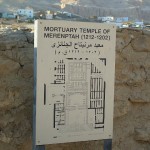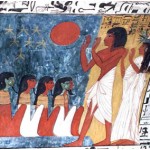
Merneith – The First Queen of Egypt?
Merneith: The First Queen of Egypt? With considerable attention lavished upon the Eighteenth Dynasty, popular TV documentaries, and with a much-visited Mortuary Temple at Deir el-Bahri, many people are aware that the female ruler Hatshepsut reigned as “King” and Pharaoh during the New Kingdom. Many people also know that Queen Cleopatra (Cleopatra VII Philopator) ruled […] [more…]

Replicating the tomb of Tutankhamun. Conservation and sustainable tourism in the Valley of the Kings
The closure of the tomb of Tutankhamun, to be replaced by an exact facsimile, has been much reported in the UK media and highlights a number of issues and raises some interesting questions. Although this is largely a discussion about the tomb of Tutankhamun, the tomb cannot be discussed in isolation and is put into the wider context of conservation issues across the royal cemeteries of the West Bank and broader globally-relevant issues of sustainable tourism. [more…]
Editorial – Journal Edition 6
We prefer to publish both together but Journal articles tend to take a lot of editorial time. When you read the acknowledgements for David Smith’s article you will realise that many, many people beyond Andrea and I have contributed time to help finalise the research. We are very grateful for their assistance. Our first article […] [more…]
Solar Eclipse Events in the New Kingdom Part 2 – Astronomical Analysis
The sun played a central role in the religion and culture of Ancient Egypt. It is therefore surprising that there seems to be no unambiguous mention of solar eclipses in Ancient Egyptian texts. Eclipses would certainly have been experienced by the Ancient Egyptians and records of them would be expected to occur in the religious corpus. [more…]
Part 1 of this paper looked at the source texts and reliefs. Part 2 now sets out the astronomical background and predicts the solar eclipse events that would have occurred during the New Kingdom. These are then correlated with the New Kingdom texts and funerary material to test the hypothesis that these might record actual eclipse events. [more…]
Public Health in Ancient Egypt by Anthony J. Cagle
Abstract. Most studies of health and illness in ancient Egypt concentrate on disease and other maladies affecting individuals and the medical treatments administered to individuals. However, the concept of public health has received comparatively little attention, largely because the practice of public health has been seen as a fairly modern phenomenon tied to purely scientific notions of the sources and causes of illness and disease and their prevention. Nevertheless, even in the absence of a true germ theory of disease, the ancient Egyptians did possess an understanding of the social context in which many disease conditions occurred and took steps to prevent and alleviate certain conditions at a group level. From fairly basic public health practices, such as the removal of trash to peripheral locations, to reasonably sophisticated theories on the origin of disease and the widespread promulgation of preventive practices, ancient Egypt shows that even in pre-scientific complex societies an awareness of the social context of health and disease existed. Egypt and other ancient societies developed strategies to deal with health and wellness on a community and national level and thus are amenable to study using modern public health theory. [more…]
Edition - August, 2012

Editorial: First Anniversary Edition
Egyptological is one year old and we celebrate with a bumper edition with eighteen original articles, reviews and albums for your delectation. The Journal It is hard to know where to start! Perhaps with Edition 5 of the Journal. Although three articles have been deferred to the next edition of the Journal we still have […] [more…]

Solar Eclipse Events in the New Kingdom – Part 1: Texts and Funerary Material
This paper discusses a class of inscriptions appearing on eleven artefacts together with text and vignettes from five tombs and funerary material from Deir el-Medina, which may contain expressions made in response to eclipses. It is proposed that: [more…]
a) these artefacts record the witnessing of a deep solar eclipse; and [more…]
b) ill understood at the time, the eclipse was interpreted by witnesses as a form of punishment or omen and was consequently expressed in religious terms on stelae; protection against recurrences of the event was also included in tombs and on funerary furniture. [more…]

Brilliant Blue: A Practical Investigation of the Production of Ancient Egyptian Faience
Abstract. Ancient faience material found in large quantities throughout Egypt display a wide variety in the quality and intricacy of workmanship. Although evidence has shown that that there were temple and royal workshops the amount of pieces discovered in and around domestic dwellings suggest a thriving cottage industry existed. This paper investigates this possibility through experiments to recreate the traditional conditions and the processes used in the manufacture of faience. A wood fired kiln based on the traditional Ancient Egyptian bread oven was used with electric fired control pieces produced in order to trial recipes and develop an understanding the role of temperature in the nitrification process. The experimentation explored the processes of application, efflorescence and cementation and the techniques of moulding, bead making, inlay and stone glazing. [more…]
 By
By